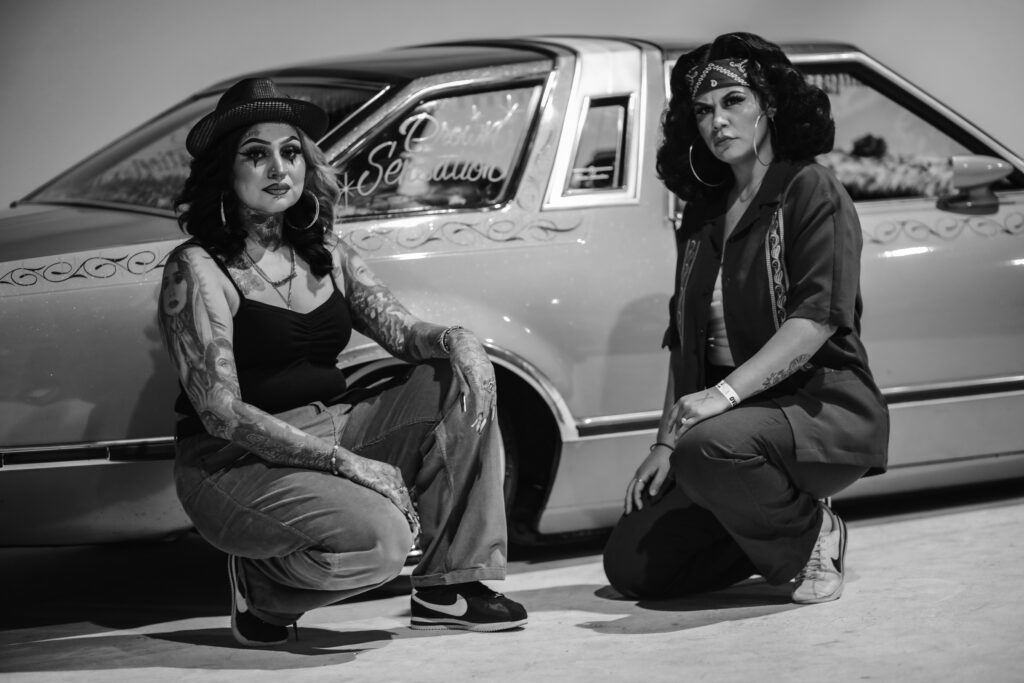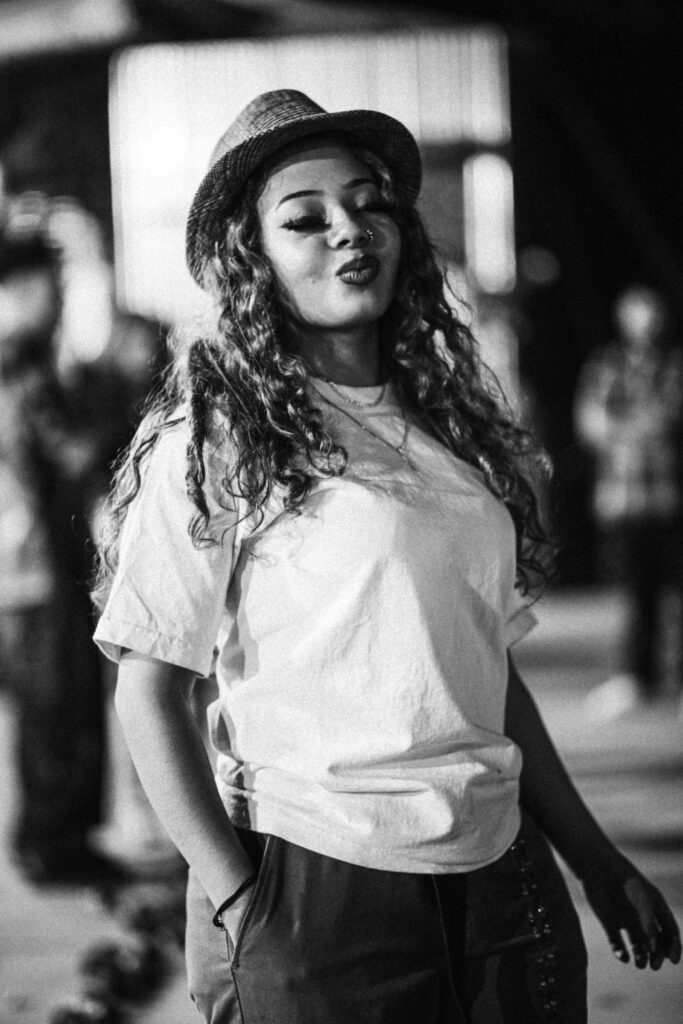
The streets of East LA






Reviving clothing with Chicano culture
At the start of the pandemic, Verenisse Guzman holed away in her East LA garage with scraps of discarded clothing—old denim pants, patches, big T-shirts and, more recently, metal. She began experimenting with the scraps, creating luxury pieces at home in place of shopping at the mall.
Guzman started out sewing by hand and worked to save up for a sewing machine.
“People would think it was really cool and asked me to make some for themselves, and, of course, I didn’t sell any of those back then,” she said.
Guzman slowly began to turn the trash of others into her own treasures.
From those early creations, Guzman has spent three years growing a popular LA Chicano streetwear brand, “RepurposingLA,’’ which is inspired by Chicano fashion from the ‘90s and focused on sustainability. She recently hosted her first runway fashion show with more than 100 unique, handmade pieces.
The pieces she makes are infused with sentimental memories. Often, Guzman draws inspiration from her parents’ clubbing outfits when styling her models.
“I used to want to look like my mom so bad, and now I look at myself and it reminds me of her, ” Guzman said.
Many of Guzman’s models, who she found through social media and local events, share the same passion for family-inspired fashion.
“It’s the whole cultural influences, from the cooking, the way people carry themselves, the icons, the fashion, the music,’’ said Gabriella Quinteros, who has been modeling Chicano fashion for six years. ‘’I loved my grandma’s outfits. I was inspired by my mom’s pictures when she was younger, the tapachula look and the ‘70s hairstyle.”

Chicanos are raised in a rich culture and often look up to their role models as inspiration for self expression.
The work of Guzman and other Chicano fashion designers shows the influence their culture has on modern styles. Despite its evolution, Chicano fashion continues to express political statements about survival and the healing power of clothing. It often highlights Catholic symbols with a mix of oversized pants, crop tops, high heels and gothic makeup.
“I vividly remember watching my mom and tias wearing their gold hoops and jewelry, long nails adorned with rings, finding it incredibly glamorous,” said Diane Bang, another model for Guzman. “[Chicano fashion] has made its mark on streetwear, urban fashion and even high-end brands, showcasing the heavy, lasting impact of Chicano style on the fashion world.”
However, family and Chicano culture are not the only driving forces behind Guzman’s fashion. According to Guzman, her favorite part of her brand is its focus on sustainability.
“Nobody talks about how it’s really made, and it’s because they leave a big carbon footprint. They don’t care about the environment,” Guzman said. “The way this industry works is to make things just for the moment; nothing is built to last.”
The fashion industry is responsible for 10% of annual global carbon emissions, more than all international flights and maritime shipping combined, according to the United National Environment Programme (UNEP). At this pace, UNEP estimates that the fashion industry’s greenhouse gas emissions will surge more than 50% by 2030.
Guzman makes sure her pieces are adjustable for different bodies and heights to avoid limitations for her customers and models, as well as to increase the life cycle of her work. Her goal is to create pieces that can be passed through generations instead of going into the garbage after a couple of uses.
“I make everything with the intention of it being better than everything else is out there.”
Estevan Oriol – Director of LA Originals
LA-based photographer and videographer Estevan Oriol directed “LA Originals,’’ a documentary containing 29 years worth of footage from his time as a tour manager for Cypress Hill and Blink-182. He has also published multiple books, including “LA Woman” and “LA Portraits.”
Estevan has impacted the media industry in Los Angeles by showing photographers not to be afraid of any situation or getting too close to the their subjects.
‘‘I just see how I’ve influenced the way other people shoot photos and the things they shoot, because when I used to shoot 20 years ago, it wasn’t common. Now it’s just blowing out,” Oriol mentioned.
From low riders to famous rappers like Snoop Dog and Eminem, Estevan’s ties to hood life and the streets of LA have given his audience a deeper understanding of the importance of everyone’s story.
“Times are different,” he said. “It’s crazy out there. It’s a different world, but if you know how to talk to people and how to finesse your way into places and out of places then you’re good.”




